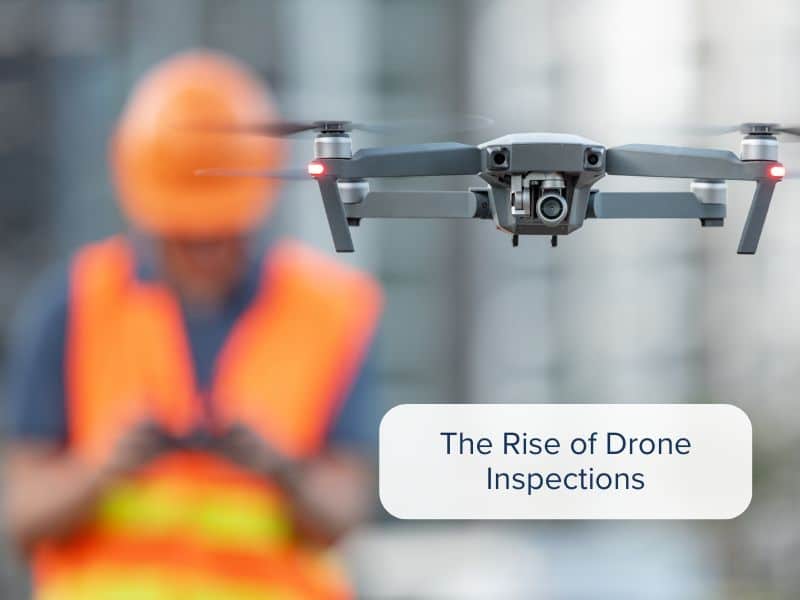
In just a few years, drone inspections have gone from niche to normal. Today, they’re a standard tool in industries from energy to agriculture, helping businesses work faster, safer, and smarter.
As the technology improves, the demand for aerial inspections is soaring. Global market forecasts predict that the drone inspection sector will grow at double-digit rates for the next decade, with sectors like energy and infrastructure leading the charge. But with bigger opportunities come bigger risks – and that’s where preparation and protection matter.
Why Drone Inspections Are Taking Off
Three key benefits are driving adoption worldwide:
Safety: Drones reduce the need for people to work at height or in hazardous environments. This is a major reason why 64% of companies in a 2024 industry survey by PwC said improving safety was their top driver for drone adoption.
Efficiency: Inspections that once took days can now be done in hours, often without shutting down operations.
Data Quality: Equipped with high-resolution cameras, thermal sensors, and LiDAR, drones capture more detail than many traditional methods, enabling faster and more accurate decision-making.
Industries Leading the Way
While drones are now used in almost every sector, there are some use cases that certainly stand out:
- Energy & Utilities: Inspecting wind turbines, power lines, and solar farms without costly downtime.
- Construction & Infrastructure: Surveying sites, checking bridge integrity, and monitoring progress.
- Agriculture: Monitoring crop health, irrigation systems, and storage facilities.
- Telecommunications: Assessing towers and antennas quickly and safely.
The Risks You Can’t Ignore
Even with experienced pilots, inspection work carries challenges:
- Increased collision risk: when inspecting infrastructure and facilities, close-proximity flying increases the risk of collisions, collisions that can damage the drone itself, what it was inspecting, or even other nearby structures.
- Harsh weather: environmental conditions can affect stability and visibility.
- High-value risk: equipment such as thermal cameras can be costly to repair.
- Data security: Inspections regularly generate images and collect data that are frequently sensitive, proprietary, or both – these need to be protected and safeguarded appropriately.
Insurance = Your Safety Net
When you’re flying close to high-value infrastructure or working in complex environments, even a small mistake can have big consequences.
A sudden gust of wind could push your drone into a turbine blade. A momentary loss of signal might see it drift into a communications tower.
In rare cases, an equipment malfunction could damage expensive sensors or payloads. That’s why insurance isn’t just a formality – it’s a safeguard that lets operators work with confidence. In many countries, commercial drone insurance is a legal requirement, covering you for third-party liability if your operations cause injury or property damage. Without it, you could be operating illegally and face significant fines, legal action, or the loss of work opportunities.
The right policy goes beyond meeting legal obligations. It can cover:
- Repair or replacement of your drone.
- Specialist payloads such as thermal cameras or LiDAR units.
- Worldwide cover, so you can take on contracts in other regions without gaps in protection.
- Equipment hire, so you can stay operational if your drone is grounded.
With the right cover in place from Coverdrone, you can focus on delivering accurate, high-quality inspections, knowing that if something goes wrong, you’ve got expert support, financial protection, and compliance with the law.
Looking ahead
Drone inspections are now mainstream, and with drones as a service (DaaS), drone-in-a-box systems, AI-driven analytics, and extended flight capabilities becoming more common, this is set to increase even further. There are further efficiency savings to be made and data quality will improve with the technology, but this also makes risk management more important than ever.
Whether you’re running a single drone or managing a fleet, staying ahead means combining the latest technology with solid compliance practices and robust insurance. That way, you can take advantage of the growing demand for aerial inspections without leaving your business exposed.
Ready to strengthen your inspection operations?
Click “Get A Quote” now to get your free Coverdrone quote in minutes. Make sure your business is protected against costly setbacks, so you can keep every project on track.
